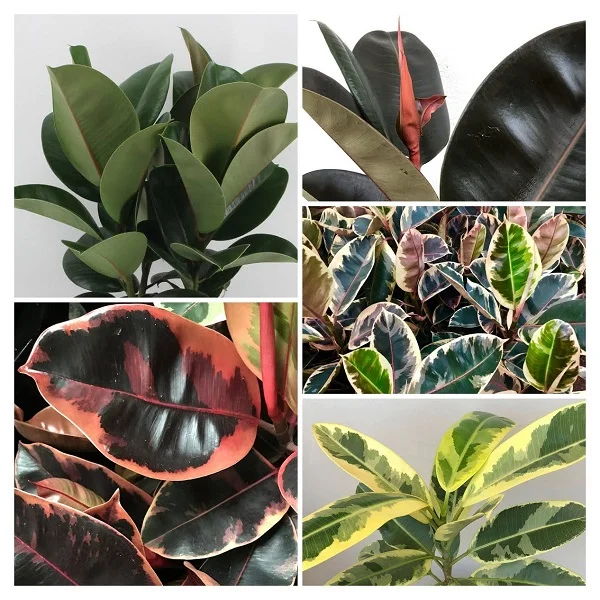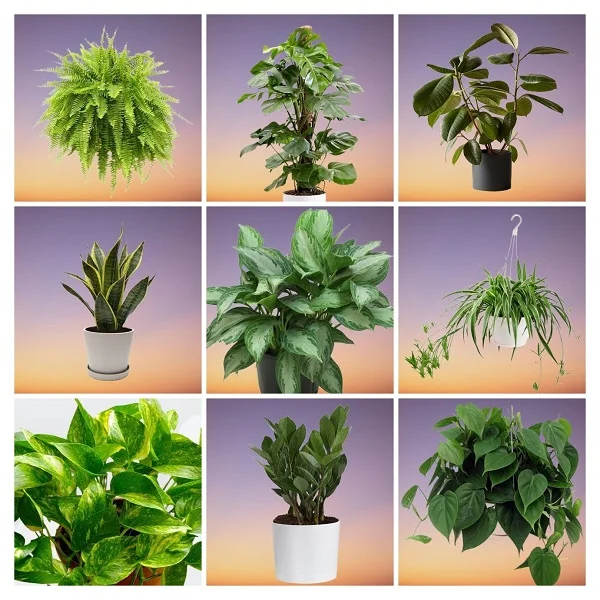African Fig Tree (Ficus cyathistipula) Indoor Care: The Ultimate Care Guide
Some links in this post may be affiliate links
African Fig Tree (Ficus cyathistipula) grows best in bright light with some direct sunlight, average warmth, moderate humidity and moderately moist, fertile, well-drained soil coupled with fortnightly feeding in the growing season.
Ficus cyathistipula also called Birchbark Fig is one of the popular Ficus varieties and bears glossy, leathery, tumbler-shaped, dark-green leaves arranged spirally on a 4 cm long petiole.
Birchbark Fig is an evergreen, vigourously-growing, shrubby plant with a thin trunk, which branches readily and may have adventitious roots. The leaves clothe the upright stems all through the year. It has a dark and flaky bark which gives it the common name, 'Birchbark Fig'.
The figs are reddish when ripe, and have thick, spongy walls which enable them to float on water. The epithet, 'cyathistipula', arises from their cup-shape (cyathus-) and persistent stipules (stipula).
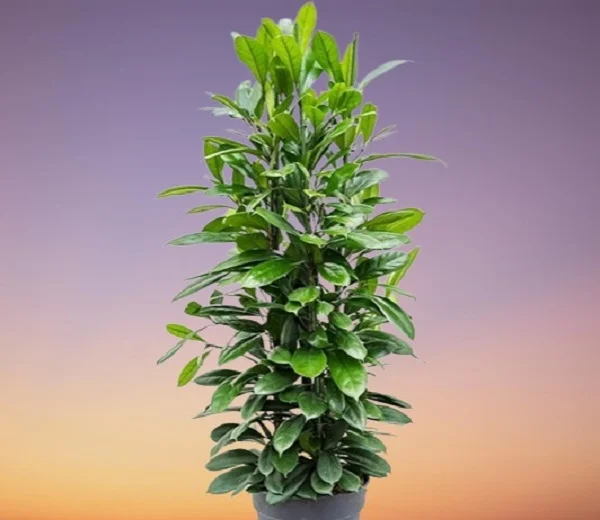
Botanical name: Ficus cyathistipula
Family: Moraceae
Common names: African Fig Tree, Birchbark Fig
Origin
Ficus cyathistipula is native to tropical forest regions of Africa where it grows besides freshed streams and rivers or in swamps where they overhang pools.
Size
African Fig Tree is an evegreen shrubby plant which can grow to a height of 16 feet in the wild but grows to 6-8 feet indoors. The leaves are about 1.8 feet long and 3 inches wide. It is one of the best trees for indoors.
Toxicity
Ficus cyathistipula like other Ficus Plants is toxic to humans and pets according to Pet Poison Helpline. The plants produce a milky white latex which is an irritant to the eyes and the skin. If ingested it can cause irritation in the mouth, drooling, vomiting, diarrhea, loss of appetite and abdominal pains.
Where to Buy
Ficus Plants are a spectacular addition to your plant collection, you may get them online from Etsy (Link to Etsy).
African Fig Plant Care Indoors
African Fig Tree (Ficus cyathistipula) flourishes in bright light with 4-6 hours of direct sunlight, average warmth of 16-240C, moderate humidity of 50-55% and moderately moist, rich, well-drained, all purpose soil coupled with fortnightly feeding during the growing season.
Ficus cyathistipula requires regular pruning to keep it neat, discourage pests and diseases as well as encourage a bushy growth. Repotting is only needed when it becomes pot-bound.
This guide will cover everything you need to know to keep your Ficus cyathistipula happy and thriving indoors; from lighting and watering to soil, humidity, propagation, and troubleshooting common issues. Keep reading for more on these growing conditions and how to achieve them.
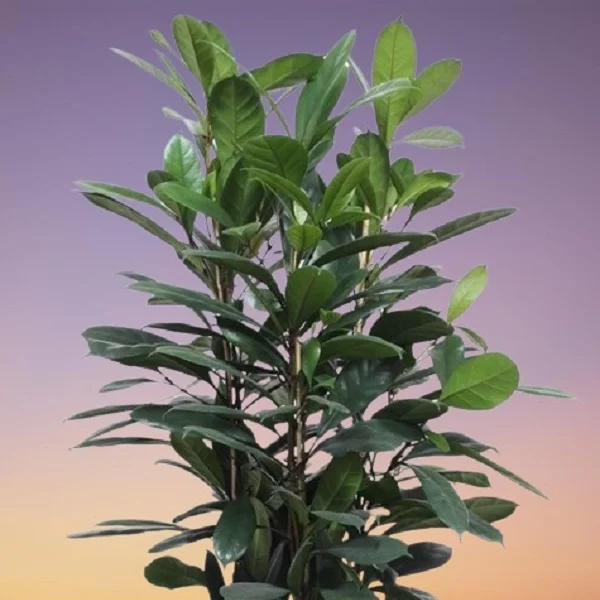
Light Requirements
African Fig Tree grows best in bright light with at least 4-6 hours of morning or late afternoon direct sunlight. It can adapt to lower light but it will grow much slower.
You may grow your Ficus cyathistipula under a grow light where natural light is not sufficient.
For even growth to prevent lopsided growth, rotate the pot regularly to ensure that the plant receives light on all sides.
Watering
Water African Fig Tree liberally during the growing season and allow the top 2-3 inches of soil to dry out between waterings to keep the soil moderately moist.
Lessen watering during the cold season to maintain the soil barely moist as growth is minimal at this time but do not let the soil dry out completely.
Ensure that the pot has a drainage hole to prevent the soil from getting soggy as it can result in yellowing, leaf drop and root-rot.
Use tepid (room temperature) water to avoid shocking this tropical plant. In addition, confirm that the water is chlorine-free to avoid spots on the leaves.
Temperature and Humidity
The best temperature for African Fig Tree is an average warmth of 16-240C. Protect it from cold drafts to prevent sudden drops in temperature as they can lead to leaf drop.
Average humidity of 50-55% is ideal for African Fig Tree. However, if the air is too dry especially where temperature is high, elevate the humidity. To raise humidity, set the pot on a wet pebble tray or use a cool mist humidifier.
Regularly clean the leaves by damp-wiping with a soft cloth to get rid of dust and discourage pest infestation. Ascertain that there is good air circulation to prevent fungal diseases.
Fertilizer (Feeding)
Feed African Fig Tree every 2-3 weeks during the growing period with a balanced, water-soluble fertilizer to promote a lush growth. Withhold feeding in the cold season as growth is reduced and feeding at this time can lead to fertilizer burn and death of the plant.
Potting Medium
African Fig Tree soil should be rich in organic matter and well-draining to prevent it from getting soggy while providing the required nutrients. Most all purpose potting mixes are ideal for this plant.
Repotting
Repot African Fig Tree at the beginning of the growing season only when it has become pot-bound. Avoid frequent repotting as it prefers to be pot-bound. Repot only when it has outgrown its current pot; when roots begin to grow through the drainage holes.
Use a pot 1 size larger and one that has a drainage hole to prevent the soil from getting soggy. Use a heavy pot as the plant can become top-heavy and topple over.
Never allow the roots to sit in soggy soil as it may lead to leaf drop and root-rot. For a large Birchbark Fig which may be difficult to handle, annually replenish the top 2-4 inches of soil with fresh soil. Check out these ceramic pots available on Amazon.
Pruning
Pruning African Fig Tree is easy. Remove dead and yellow leaves to maintain the plant neat and tidy and also discourage pests and diseases.
Cutback the branches when the plant has reached maximum height or it has become leggy, to rejuvenate growth and encourage a bushy growth. You may use the foliage emating from pruning to propagate new plants.
Propagation
Ficus cyathistipula (African Fig Tree) is easily propagated during the growing season from stem cuttings and by air layering. You can root the cutting in soil or in water. Read more on how to propagate Ficus cyathistipula (African Fig Tree) in 3 Easy ways.
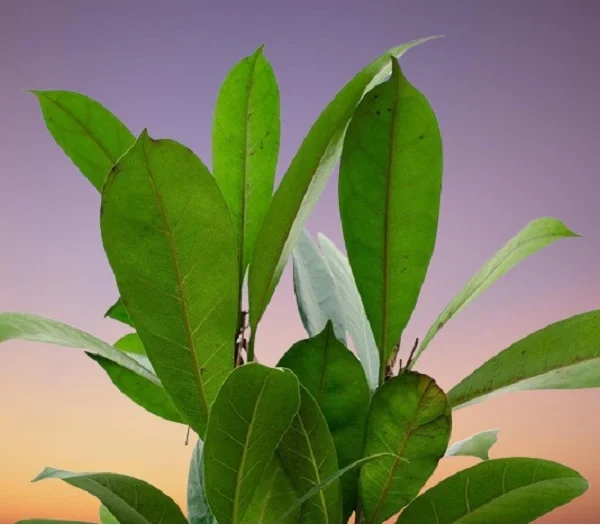
Ficus cyathistipula common Problems and Treatment
Ficus cyathistipula is a resilient plant but like all plants it can encounter problems like yellow leaves, leaf drop, drooping leaves, brown leaf tips, pests, and diseases among others. Read more on Ficus cyathistipula (African Fig Tree) Common Problems and their Treatment.
Final thoughts
African Fig Tree (Ficus cyathistipula) is a hardy, adaptable houseplant that brings tropical elegance to any indoor space. With its glossy green foliage, low-maintenance needs, and pest resistance, it’s an excellent choice for both beginners and experienced plant lovers. By providing bright light, moderate watering, and occasional pruning, your Ficus cyathistipula will thrive for years.
Frequently Asked Questions
1. Is the African Fig Tree easy to care for?
Yes. African Fig Tree is one of the easiest Ficus varieties to grow indoors, requiring minimal maintenance.
2. Can I grow an African Fig Tree in low light?
African Fig Tree can survive in medium light but grows best in bright, indirect light.
3. Is the African Fig Tree pet-friendly?
No, like most Ficus plants, African Fig Tree is toxic to pets if ingested. Keep it out of reach of cats and dogs.
4. How often should I prune my Ficus cyathistipula?
Prune your Ficus cyathistipula in spring or summer to shape the plant and remove dead or damaged leaves.
5. Can I grow the African Fig Tree in a small pot?
Yes you can grow Africa Fig Tree in a small pot, but it will eventually need repotting every 2–3 years as it outgrows its container.
You liked it? Share on social media.
Related Content
Amazon Associates Disclosure
Homeplantsguide.com is a participant in the Amazon Services LLC Associates Program, an affiliate advertising program designed to provide a means for sites to earn advertising fees by advertising and linking to amazon.com.



